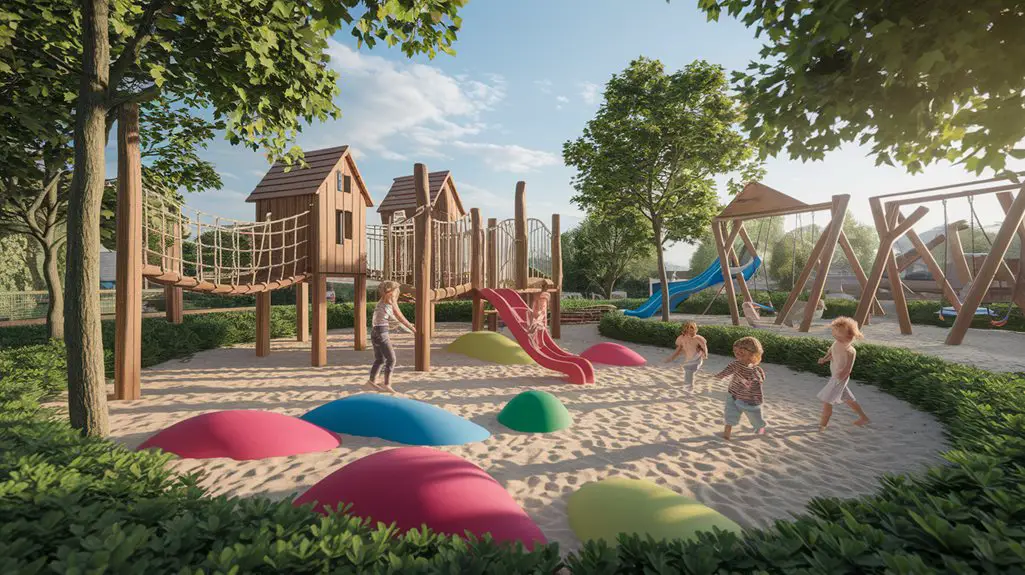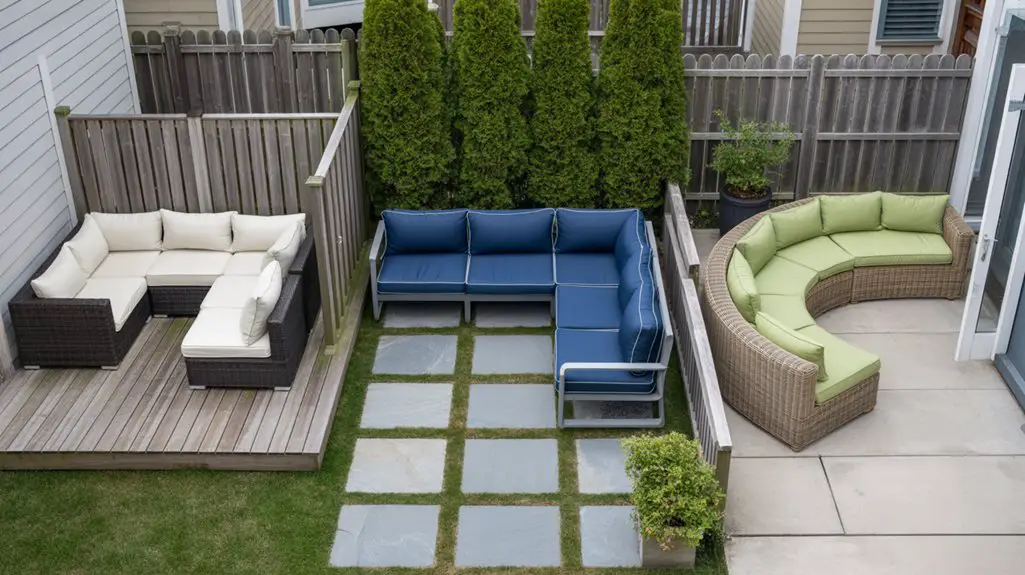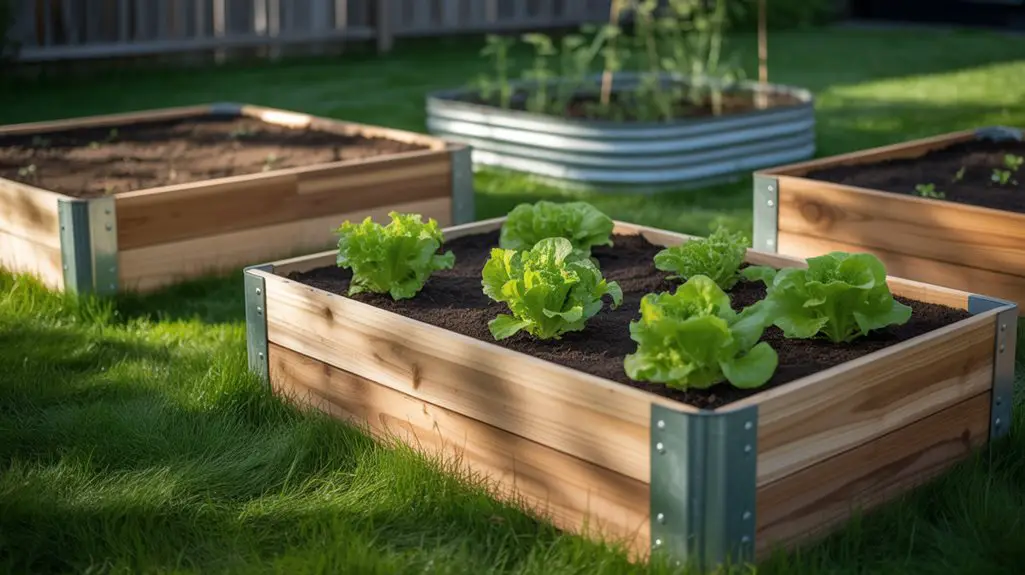Did you know that children who spend time in thoughtfully designed play spaces develop 32% better problem-solving skills than those in conventional playgrounds? Your child’s play environment shapes not just their fun moments but their cognitive development, physical abilities, and social skills. When you create a play area that balances natural elements with imaginative features, you’re building more than just a space—you’re crafting an essential developmental foundation that will influence their approach to challenges for years to come.
Natural Adventure Zones: Using Landscape Elements
While traditional playgrounds have their merits, natural adventure zones offer children richer sensory experiences and developmental opportunities. You’ll find these spaces incorporate logs, boulders, hills, and native plants to create dynamic play environments that stimulate imagination and physical development.
When designing your natural play area, consider incorporating water features like shallow streams or rain gardens. These elements teach children about ecosystems while encouraging sensory exploration.
Include varying terrain with gentle slopes, stepping stones, and balance logs to develop proprioception and coordination.
The beauty of natural zones lies in their open-ended design—children assign their own meaning to spaces rather than following prescribed play patterns. This strengthens problem-solving abilities and fosters creativity.
Unlike static equipment, natural elements change seasonally, providing ever-evolving learning opportunities throughout the year. Additionally, incorporating backyard play area landscaping can enhance the aesthetic appeal and functionality of the space.
Multi-Sensory Play Stations for Development
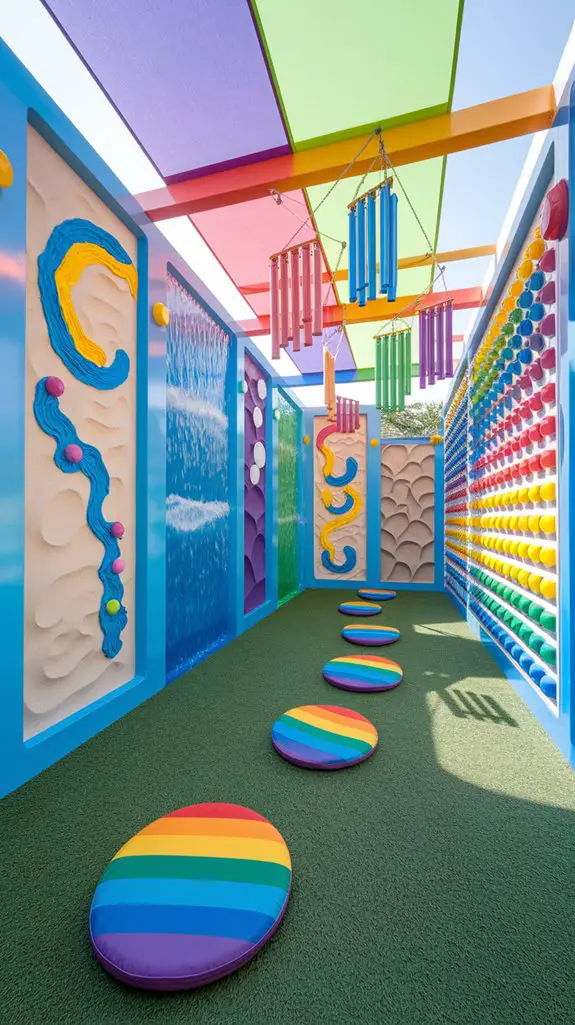
When designing for holistic child development, multi-sensory play stations serve as essential environments where children can engage all their senses simultaneously.
You’ll want to incorporate tactile panels with various textures, musical elements that respond to touch, and aromatic plants that stimulate smell. Consider including water features where children can experiment with cause and effect while developing fine motor skills. Sand areas paired with simple tools encourage problem-solving through scooping, pouring, and molding. Don’t forget visual stimulation through kaleidoscopes, light tables, or color-mixing panels.
These stations aren’t just fun—they’re purposeful learning zones that support cognitive connections, language acquisition, and social interaction. Integrating natural elements in play areas can enhance children’s connection to nature, fostering their creativity and well-being.
Creative Theme-Based Play Areas That Spark Imagination
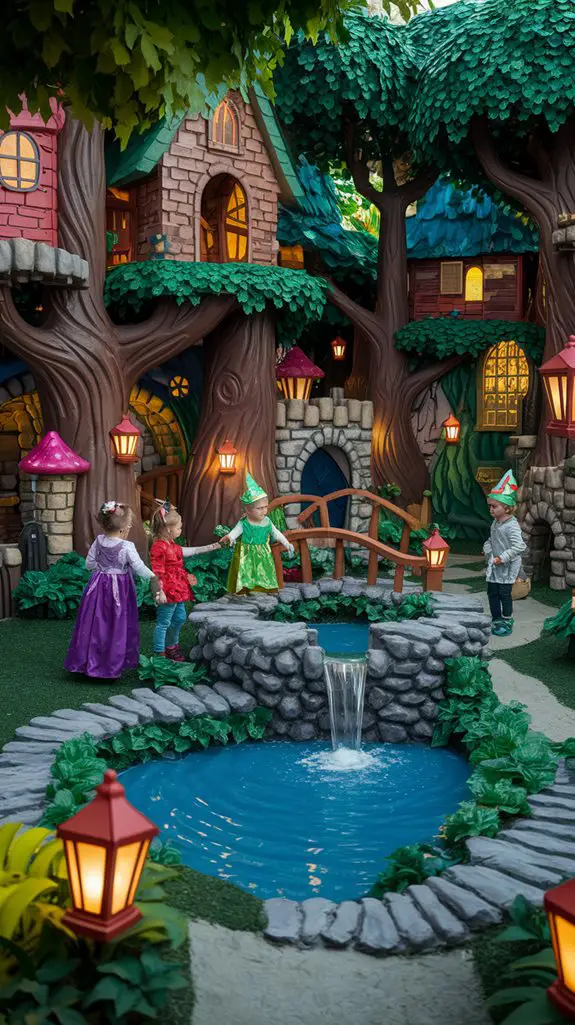
Transforming ordinary play spaces into immersive thematic worlds encourages children to develop narrative thinking and symbolic play skills.
When you design theme-based environments, you’re not just creating beautiful spaces—you’re building platforms for cognitive development and social interaction.
Children thrive in settings that connect to their interests while stretching their imagination.
Consider these themed approaches:
- Forest explorations with treehouse structures, hollow logs, and nature-based elements
- Space adventures featuring control panels, telescopes, and cosmic climbing structures
- Underwater worlds with sensory water features, sea creature sculptures, and wave-like structures
- Storybook scenes that bring familiar tales to life with character elements and narrative-based play props
These themed environments support children’s natural storytelling abilities while promoting language development, problem-solving, and collaborative play within meaningful contexts. Incorporating backyard playhouses for imaginative children can further enhance these experiences by providing dedicated spaces for exploration and creativity.
Weather-Friendly Designs for Year-Round Enjoyment
Thoughtfully-designed play areas must remain accessible and engaging regardless of weather conditions or seasons.
Consider incorporating covered pavilions that shield from rain while allowing airflow, or installing shade sails that block harmful UV rays during summer months without trapping heat. For colder climates, windbreaks and south-facing play zones capture precious winter sunshine.
You’ll want to choose materials strategically—avoid metal slides that overheat in summer or become frigid in winter.
Instead, opt for composite materials that maintain reasonable temperatures year-round. Proper drainage systems prevent puddles and ice formation, keeping surfaces safe after precipitation.
Don’t forget seasonal versatility in your design: consider how a water play feature might convert to another activity during colder months, ensuring children’s developmental needs are met continuously throughout the year. Additionally, incorporating backyard obstacle courses can enhance physical fitness and promote active play during all seasons.
Space-Saving Solutions for Smaller Backyards
Limited square footage doesn’t have to restrict a child’s play possibilities if you approach design with creativity and intention.
Vertical space utilization and multi-functional equipment can transform even the smallest yards into adventure zones that support cognitive and physical development.
- Install wall-mounted fold-down activity boards that can be tucked away when not in use.
- Choose modular play equipment that adapts to different play scenarios and developmental stages.
- Create zones with movable boundaries using weather-resistant storage containers that double as play elements.
- Incorporate hanging elements like swings that can be easily removed to free up space for other activities.
When designing compact play spaces, prioritize versatility over size—children don’t measure joy in square footage but in engagement opportunities. Additionally, incorporating creative DIY ideas can enhance the play area while encouraging kids to explore their imaginations.
Safety Features That Don’t Compromise on Fun
Safety and fun exist on the same playground rather than opposite sides of the fence. When designing play areas, you’ll find that protective elements can actually enhance playtime creativity rather than limiting it. Incorporating exciting backyard games can also encourage physical activity and social interaction among children.
| Safety Feature | Benefits | Play Value |
|---|---|---|
| Rubber Mulch | Cushions falls | Tactile exploration |
| Round Edges | Prevents injuries | Smooth for climbing |
| Mesh Fencing | Contains play | See-through boundaries |
Choose materials that serve dual purposes—like climbing walls with proper hand grips that develop motor skills while ensuring secure play. Consider semi-enclosed spaces that offer supervision visibility while giving children the thrill of “hiding spots.” Remember, safety features should be invisible to children, seamlessly integrated into their play experience while providing you peace of mind.
Conclusion
Phenomenal play spaces prioritize your child’s potential, providing purposeful paths to development. You’ll witness wonderful growth as they wander through weather-resistant worlds, navigate natural nooks, and discover delightful details in multi-sensory stations. Whether working with wide expanses or tiny terrains, you’re creating creative corners where children confidently climb, curiously explore, and collectively imagine—all while you’ve thoughtfully integrated safety without sacrificing sensational fun.

